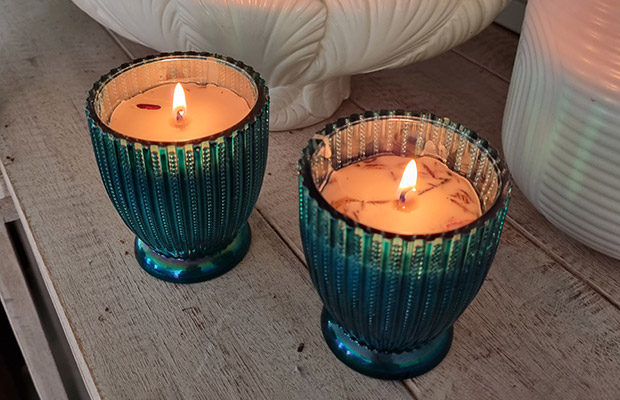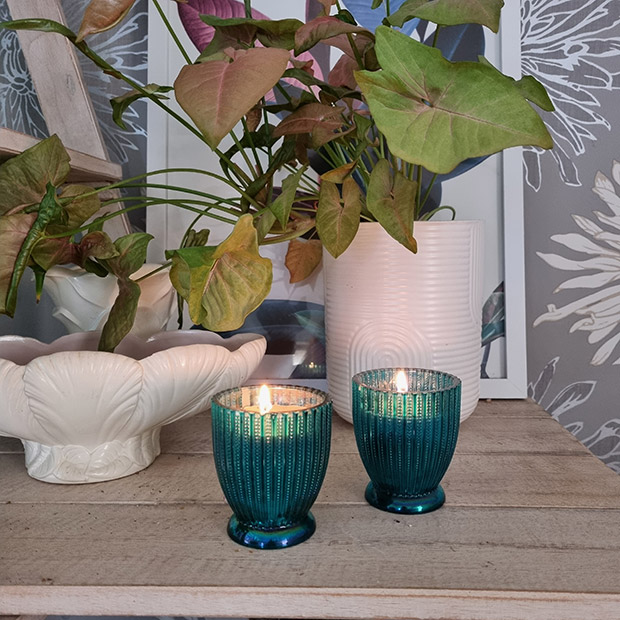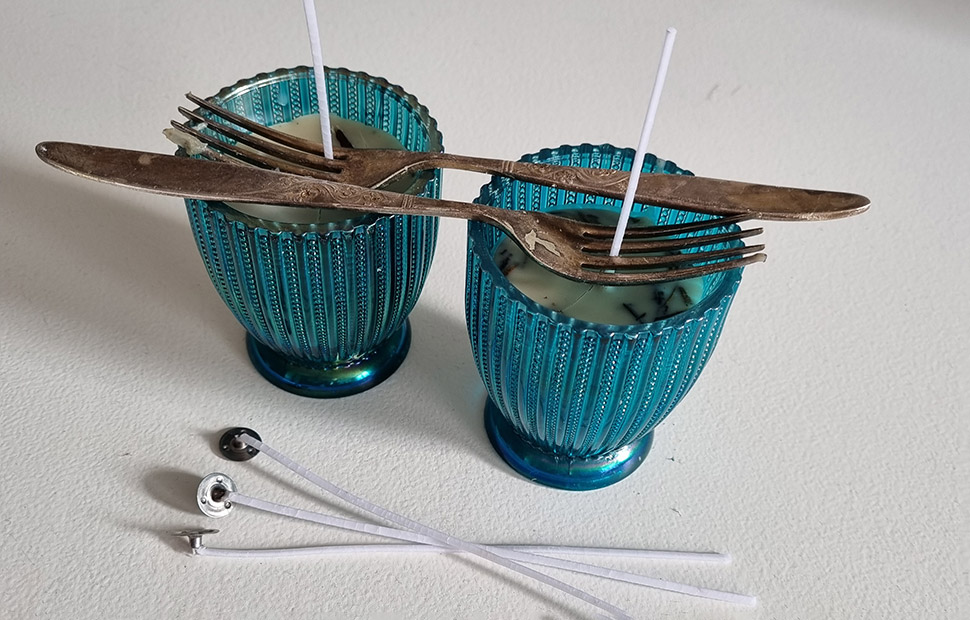DIY: How to make your own non-toxic wax candles

Ready yourself for cosy winter evenings with this handy step-by-step guide to making your own non-toxic and naturally scented candles
Words and images: Jane Wrigglesworth
Most of the cheaper candles available today are made with paraffin, a substance that releases carcinogenic chemicals into the air when burned. If you would like to give candle-making a go, try a non-toxic ingredient instead, such as soy wax or beeswax.
Soy wax is made from the oil of the soybean. It’s sustainable, biodegradable, clean burning, and more affordable than beeswax, but it’s also a soft wax, which means you’re limited to the type of candle you can make. Soy wax, for example, is not suitable for pillar or taper candles, which is why soy candles are typically ‘housed’ in a glass, tin or ceramic jar – a non-flammable container that ‘holds’ the wax.
Beeswax has a higher melt point than soy wax, creating long-lasting candles. Like soy wax, it’s non-toxic, and it has its own naturally sweet fragrance. It’s not usually seen as a container candle, though. Because it has a high melt point, pure beeswax container candles can burn unevenly. The wick tends to ‘tunnel’ down into the wax and you’re left with a ring of unmelted wax around the sides of the container. You can get around this by using a blend of wax that includes a low melt point wax. Increasing the diameter size of your wick may also help.
A mix of soy wax and beeswax creates a lovely candle that includes a soft honey colour and honey scent, and is cheaper on the purse than a pure beeswax candle if you don’t have your own supply of beeswax.

If you want to use essential oils though, soy wax has a better ‘scent throw’ – the aroma that the wax gives off – than beeswax. The natural scent of beeswax can mask the scent throw of essential oils. This is important if you are contemplating making a therapeutic aromatherapy candle.
Synthetic fragrance oils are cheaper and longer lasting, scent-wise, but they are just that – synthetic. A therapeutic aromatherapy candle will require essential oils.
An alternative to essential oils is to add dried herbs, such as rosemary or lavender, to the mix, even coffee beans, that will throw off a subtle scent when heated.
SOY CANDLES
To measure how much wax you need, pour water into your container or containers to about 1cm below the top of the container, then tip it into a measuring jug and measure the amount. As wax changes properties when it melts, use the following formula to work out how much wax you need. Volume of water (ml) x 0.8 = grams of wax. So let’s say our container holds 100ml water. Multiply that by 0.8. Therefore: 100 x 0.8 = 80g of wax.
Note: Avoid putting the wax straight on the flame (ie. in a saucepan directly on the heat). Always use a double burner. Have a fire extinguisher or a large amount of baking soda on hand to douse flames in case of fire.
You need:
Heatproof container/s for candle
Prewaxed candlewicks with wick tab
Glue gun
Soy wax
Dried herbs or spices, for fragrance (I used dried thyme, star anise and cacao nibs), optional
Saucepan
Heatproof glass jug
Thermometer
Forks (or specific wick holders), to hold the wicks in place
Old spoon for stirring
Measure the amount of wax needed to fill your container/s using the instructions above.
Wipe the container/s dry. Use the glue gun to attach the wick tab to the bottom of the container/s in the centre. Let dry. Place the forks on top of the containers with the wick in between the thongs, to keep the wick centred and upright.
Place the wax in the heatproof jug and place the jug in a saucepan that is quarter to half filled with water. Place the saucepan on the stove and turn on the heat to medium. Heat until melted, but do not let the wax exceed 85deg C. Exposing soy wax to excessive heat can make it separate or become soft and clumpy. Stir every now and again to hasten melting.
When the wax has melted, remove the jug from the heat and set it on a heatproof surface. Allow the wax to drop to 65deg C. If you have fragrances or dried herbs to add, do so now. Stir to combine.
Pour the wax into your container.
Allow your candle to cure for 48 hours before lighting.


